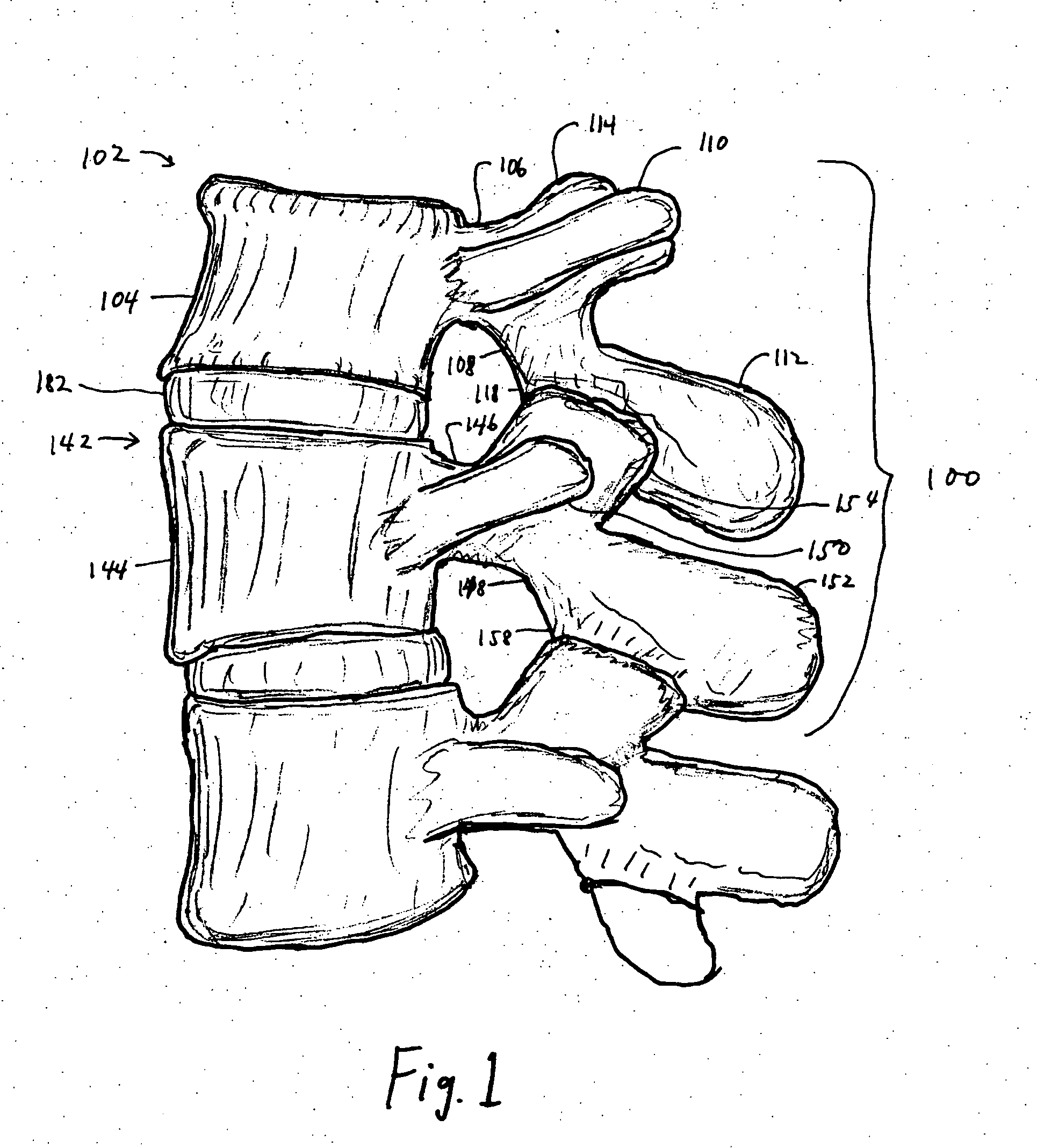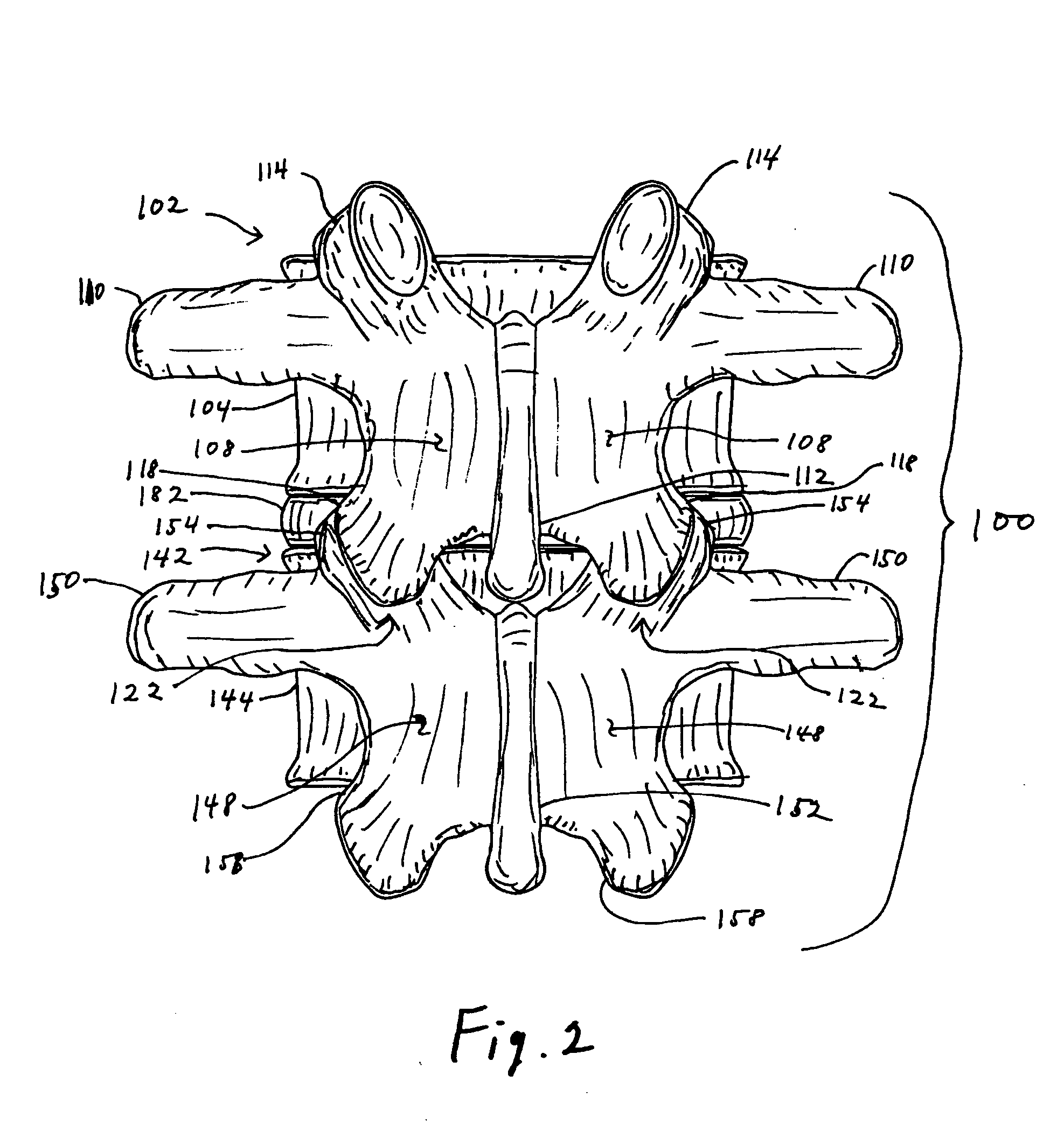Facet joint prosthesis
a facet joint and prosthesis technology, applied in the field of human spine prosthesis, can solve the problems of degeneration of the facet joint between the vertebrae, low back pain, adverse effects of spinal fusion,
- Summary
- Abstract
- Description
- Claims
- Application Information
AI Technical Summary
Benefits of technology
Problems solved by technology
Method used
Image
Examples
Embodiment Construction
[0064] The design of the improved facet joint prosthesis of the invention is intended to overcome the disadvantages of the previous designs.
[0065] The improved facet joint prosthesis of the invention comprises two articulating elements: [0066] a) a generally conical prosthesis for the inferior articular process of the cephalad vertebra, and [0067] b) a generally cup-shaped prosthesis for the superior articular process of the caudad vertebra that receives the conical prosthesis of the cephalad vertebra.
[0068] The articulating elements of the prosthesis are fixed to their respective vertebrae with appropriate fixation devices. These fixation devices may be of the types conventionally used in spinal prosthesis fixation. Alternatively, one or more of the fixation devices may have a preferred structure as discussed below.
[0069] The conical prosthesis for the cephalad vertebra (“the cone”) has a generally circular cross-section. An interior cavity extending from the base of the cone in...
PUM
 Login to View More
Login to View More Abstract
Description
Claims
Application Information
 Login to View More
Login to View More - R&D
- Intellectual Property
- Life Sciences
- Materials
- Tech Scout
- Unparalleled Data Quality
- Higher Quality Content
- 60% Fewer Hallucinations
Browse by: Latest US Patents, China's latest patents, Technical Efficacy Thesaurus, Application Domain, Technology Topic, Popular Technical Reports.
© 2025 PatSnap. All rights reserved.Legal|Privacy policy|Modern Slavery Act Transparency Statement|Sitemap|About US| Contact US: help@patsnap.com



